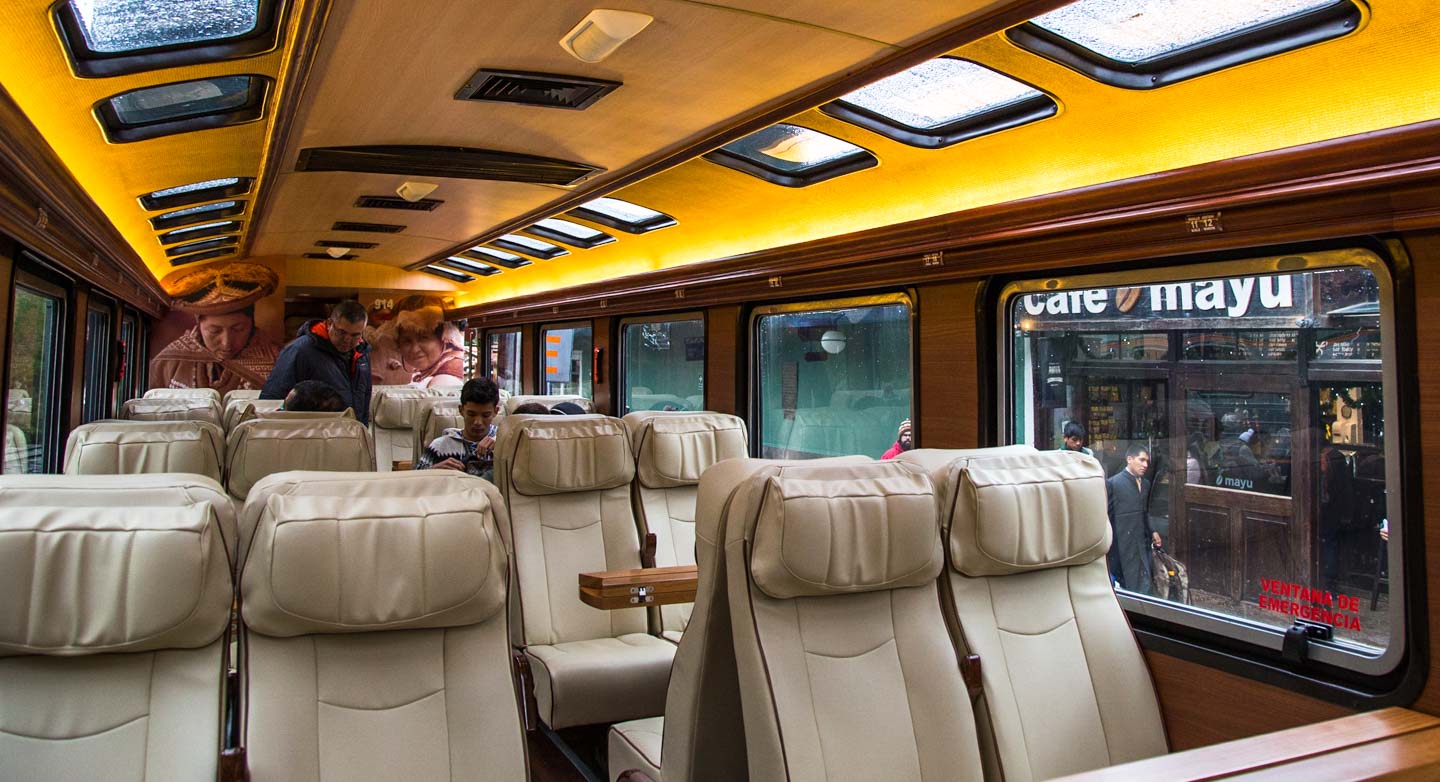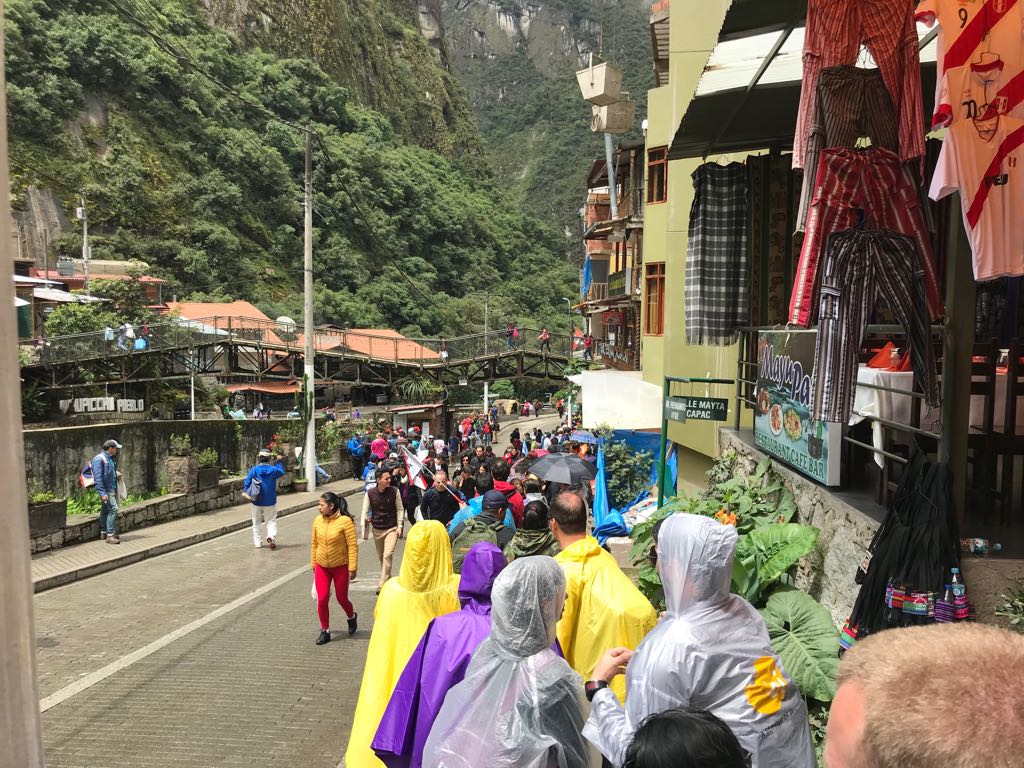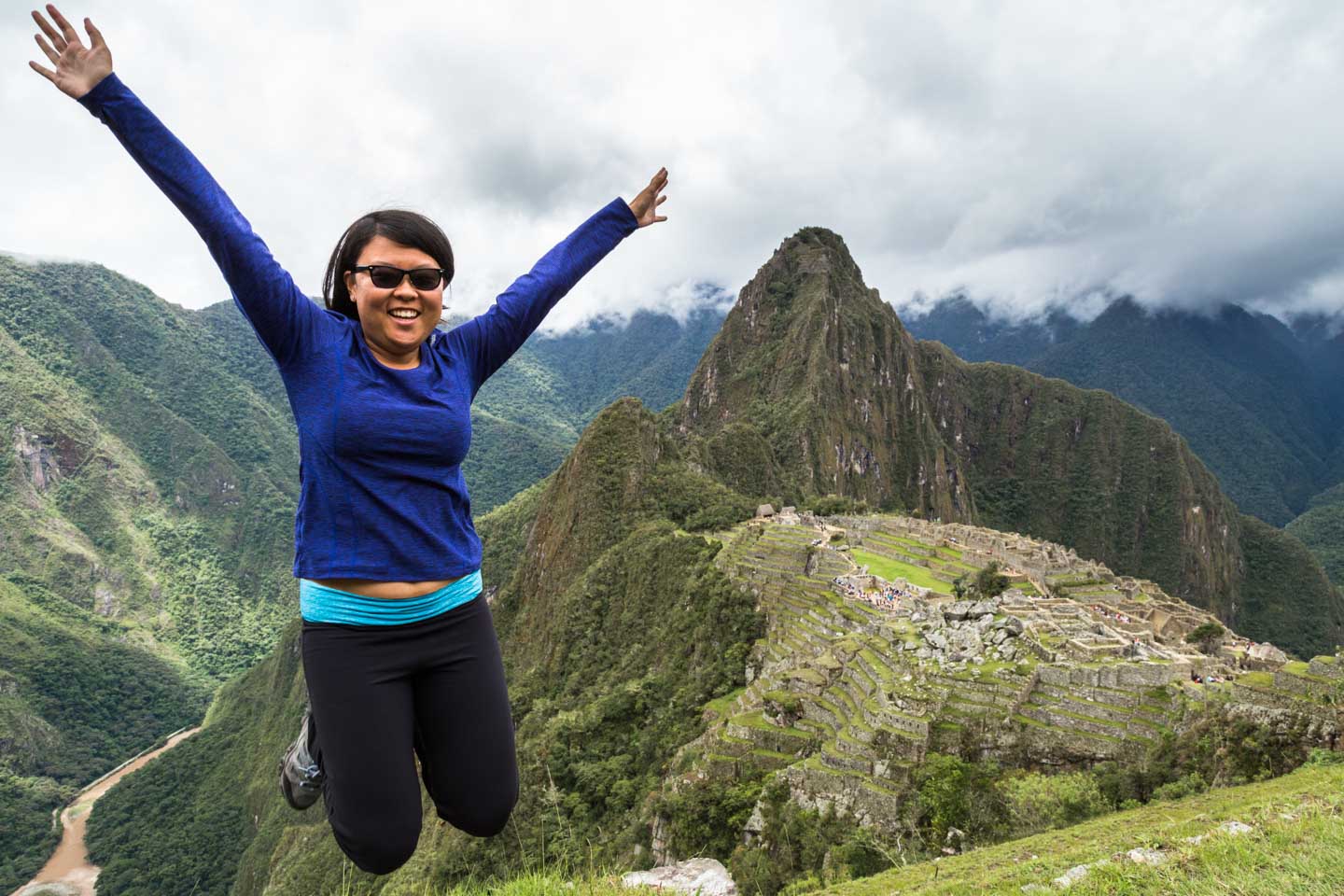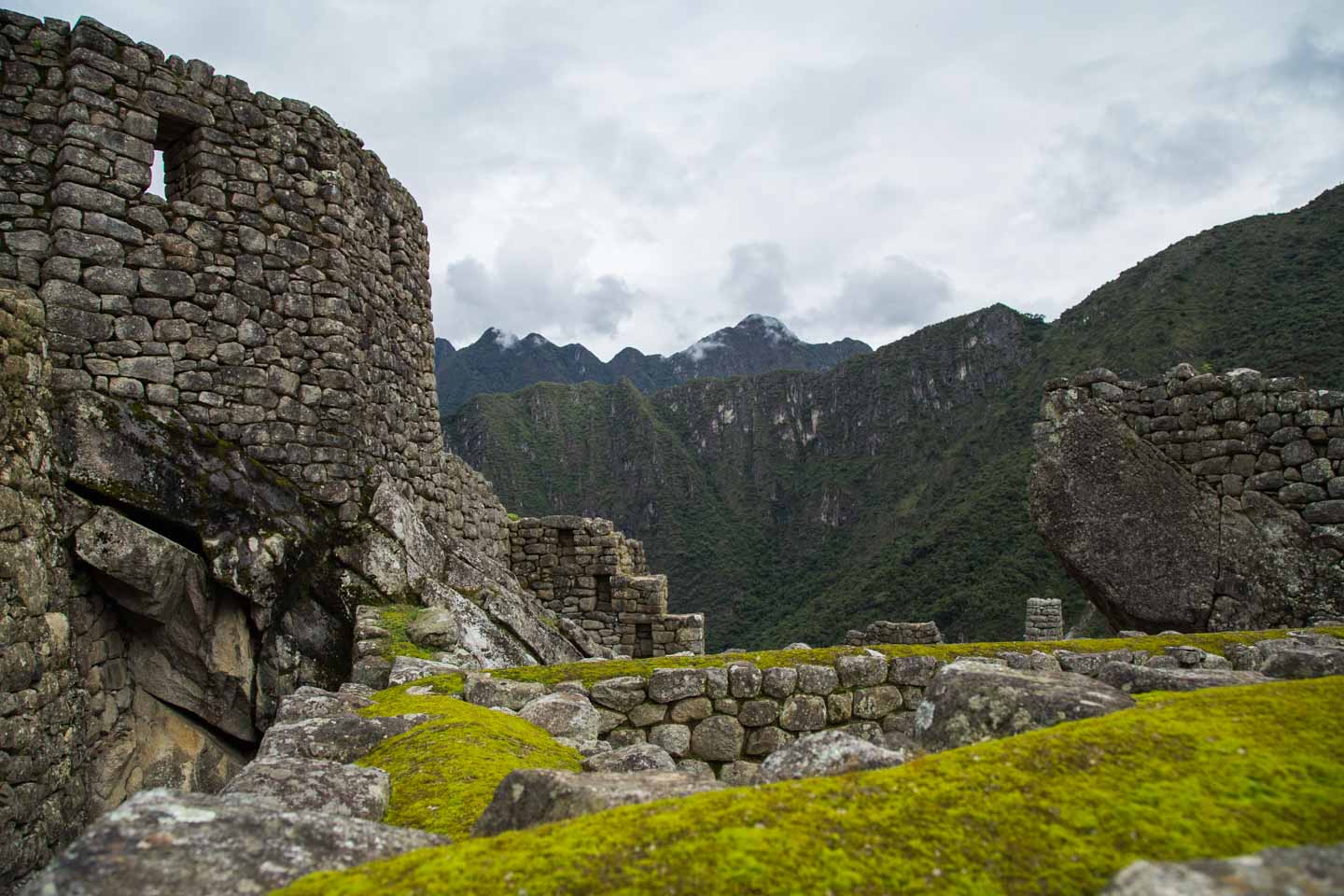Ah, Machu Picchu. The “Lost City of the Incas.” While not in our Top 5, it had always been somewhere we wanted to go at some point. It fit well with this South America route. Without the pressure and expectation of Galápagos, we went to Machu Picchu to enjoy it for what it is.
There are many ways to get to Machu Picchu – via the Inca Trail, via other treks such as the Salkantay Trek, via bus to Santa Teresa then hike to Aguas Calientes, or via train to Aguas Calientes. Given our time limits, we opted for the fastest way, which is via train over the course of a (very, very long) day. Trekking to Machu Picchu is supposedly incredible and a much more immersive experience, so we recommend that for those who have more time! That would have been much more up our alley if we had more time.
Getting to Machu Picchu by Train
We woke up at 3am (blehhh) and by 3:30am, a van had picked us up from the hostal to drive us to Ollantaytambo for our 6:40am train to Aguas Calientes. Trains are either with PeruRail or IncaRail, and are some of the most expensive train rides in the world given the length / time of the ride. These train companies (mostly foreigner owned) are making an absolute killing on these train tickets! At least the train station is fairly nice (and the bathroom is clean / has toilet paper / is free).

With all the hordes of tourists there (a theme throughout the day), we boarded the trains and found our seats. We were with IncaRail, which is supposedly newer than the PeruRail trains, but is cheaper; the company doesn’t matter, just which train times have seats available. In general the trains were not fast, fairly rickety, but pretty fancy otherwise, very clean and modern and nice on the inside.

Two hours later, we arrived in Aguas Calientes and were shepherded like sheep to a square that served as a chaotic meeting point for groups. We had the afternoon timeslot (Machu Picchu entrance tickets are either morning or afternoon), so we had some time to kill before taking the bus up to the ruins. It took only a few minutes to confirm that Aguas Calientes is the overpriced touristic town that everyone describes it to be. We were glad we weren’t staying overnight.

We met back at the meeting point at 10am, and waited for a while for everyone to get there and get stuff sorted out (get bus tickets, etc.). Finally we were headed for the bus up to Machu Picchu! Or so we thought… not so fast. There was an absolutely HUGE line for the bus, and no buses to be seen. Wonderful. This was our first real-life indication of just how touristy and crowded Machu Picchu was going to be. Yikes.

An hour later, we make it onto the bus (finally!). The ride was pretty gorgeous, winding through mountain roads, with the valley getting further and further. The one funny thing about the bus was a monitor displaying speed – but a speed that was very obviously wrong. Not just because we were sitting in the front and could see the speedometer, but the bus felt like it was going 3 to 4 times faster than the display. Heh. I guess the fake number comforts some people.
A quick 20-30 minutes later, we were finally there (yay!). The entrance was just as chaotic as the bus station, and it was a mess sticking to our guide who would supposedly walk us through the ruins. Guess how long we stuck with him? For all of 5-10 minutes. One of the first stop with the guide was the typical viewpoint where everyone crowded. So many people! We had to get away from the crowds.
Machu Picchu View
Getting away from the crowds turned out to be our favorite part of the day. We ditched our guide/group, climbed higher up, and found a little refuge for ourselves. Ahhh, peace and quiet… well, as much as you could hope for at Machu Picchu. Finally some breathing room and the time and space to take some photos.

First, make sure we have all the photos we each want with the view.

Once we took all the photo variations we were happy with, we just found a quiet spot to sit, breathe, and soak it all in.

Machu Picchu is really meant to be enjoyed in peace and calm. To soak in its mystery and contemplate its magic. To admire the visionary who found this spot where there is almost 360 degree view of the valley and mountains all around it. To imagine how the Incas conceived and built this citadel oasis for themselves. To think about history and human civilization and the meaning of life.

The view really was incredible. As mystical as they say.

We will think back to Machu Picchu and fondly remember these moments when it felt like it was just ourselves and this spectacular place. Those moments are forever seared in our memories.
Machu Picchu Ruins
The mysticism behind the old town of Machu Picchu perhaps comes from its location. Perched in between the mountains of Machu Picchu and Huayna Picchu (meaning old and young mountains, respectively), the whole town was very picturesque and compact.
The ruins were mainly divided into four sectors – urban and agricultural sectors, as well as an upper and lower town. At the urban sector, stone houses served as shelter for the many people living in Machu Picchu, while at the agricultural one, terraces contoured the mountain side providing land for the crops. From our vantage point, we saw the many terrace levels going down the mountain, and imagined how they looked like when all the crops were ready for harvest.

The other two sectors seemed to have specific roles as well. The upper town housed temples and the lower town housed warehouses. While walking through the ruins, two structures called our attention in the upper town for its craftsmanship and scientific features – the Intihuatana Stone and the Temple of the Sun.
Intihuatana Stone
Meaning an instrument or place to “tie up the sun,” this stone was believed by the Incas to keep the sun in its place. It pointed directly at the sun during the winter solstice and is believed to be used as a calendar.

Temple of the Sun
The Temple of the Sun was a place to worship the Inca’s main God, Inti. The windows of the temples face the sun during its two solstices and helped the Inca make decisions regarding their crops and harvests. It was also here where the priest and Inca would conduct rituals of animal sacrifice in order to “predict” the future and “avoid” disasters.

It always impresses us to find out how resourceful and knowledgeable these older civilizations were, especially working with so little as compared to what we have now.

Down in the lower town, we spotted many llamas roaming free, going in and out of the old stone warehouses. Tourists lined up to have a chance to take an up close shot with one of them.

In hindsight, we were glad Machu Picchu wasn’t the “main” attraction in our South America route, because it was pretty touristy. Still worth going though! Obviously destinations like this are famous for a reason, so it’s understandable that a ton of people from around the world want to go. For us, we still prefer places that are not so crowded, but the time we had to ourselves at the top, away from the crowds, to enjoy Machu Picchu, was absolutely priceless.
